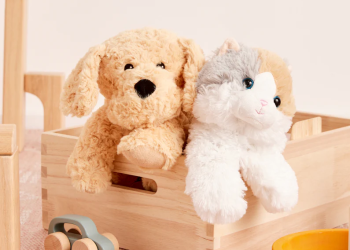Just like humans, pets can experience emotional lows, and pet depression is a real condition that can affect their overall well-being. Recognizing the signs of depression in your pet is essential for addressing the underlying causes and ensuring they lead a happy, healthy life. Whether your companion is a dog, cat, or other animal, understanding their behavior and emotions can help you provide the support they need.
Common Causes of Pet Depression
Major Life Changes
- Moving to a New Home: Relocating can disrupt a pet’s routine and sense of security.
- Loss of a Family Member: The death or departure of a loved one, including other pets, can leave your pet grieving.
- Change in Routine: Adjustments like a new work schedule, a baby, or another pet can create stress.
Lack of Stimulation
- Boredom or lack of mental and physical activity can lead to withdrawal.
- Limited social interaction can leave social animals, like dogs, feeling isolated.
Health Issues
- Chronic pain, illness, or hormonal imbalances (e.g., hypothyroidism) can mimic or contribute to depressive symptoms.
- Aging and cognitive decline in senior pets can lead to behavior changes resembling depression.
Traumatic Experiences
- Pets rescued from abusive or neglectful environments may carry emotional scars that manifest as depression.
Recognizing the Signs of Pet Depression
Changes in Behavior
- Lethargy: A sudden decrease in energy levels or enthusiasm for activities they previously enjoyed.
- Avoidance: Hiding, withdrawing from family interactions, or avoiding contact.
- Aggression: Sudden irritability or aggression, especially in normally calm pets.
Appetite Changes
- Loss of Appetite: Refusing to eat or showing less interest in food.
- Overeating: Stress eating or overeating as a coping mechanism.
Altered Sleep Patterns
- Sleeping more than usual or showing signs of restlessness and insomnia.
Vocalizations
- Increased Whining or Meowing: Unusual vocalizations may indicate distress.
- Silence: For vocal pets, a sudden lack of communication can signal sadness.
Grooming Habits
- Cats: Excessive grooming or a lack of grooming, leading to unkempt fur.
- Dogs: Repetitive behaviors like licking or chewing paws.
Loss of Interest
- Ignoring toys, refusing to play, or showing disinterest in walks or outdoor activities.
- Lack of enthusiasm for greeting family members or participating in daily routines.
Differentiating Depression from Other Conditions
Rule Out Medical Issues
- Schedule a veterinary checkup to ensure there are no underlying health problems causing the symptoms.
- Common conditions like arthritis, dental pain, or gastrointestinal issues can mimic depression.
Behavioral Assessments
- Consult an animal behaviorist if your pet’s symptoms persist after addressing potential medical concerns.
- Observe environmental triggers that may contribute to their mood changes.
Supporting a Depressed Pet
Provide Routine and Stability
- Establish a consistent daily schedule for feeding, walks, and playtime.
- Predictable routines help pets feel secure and reduce anxiety.
Increase Physical Activity
- Dogs: Engage in daily walks, play fetch, or introduce new outdoor activities.
- Cats: Use interactive toys, laser pointers, or climbing structures to stimulate activity.
Mental Stimulation
- Rotate toys to maintain novelty and interest.
- Introduce puzzle feeders or treat-dispensing toys to keep their minds engaged.
Offer Social Interaction
- Spend quality time with your pet, providing affection and attention.
- For social animals, consider playdates or introducing a compatible companion.
Create a Calming Environment
- Designate a quiet, comfortable space where your pet can retreat when they need to relax.
- Use calming aids like pheromone diffusers or soothing music designed for pets.
Addressing Underlying Causes
Grieving Pets
- Allow them time to process the loss of a companion or loved one.
- Provide extra comfort and reassurance during their grieving period.
Adjusting to Change
- Gradually introduce new routines, people, or pets to minimize stress.
- Use positive reinforcement to associate changes with good experiences.
Recovery from Trauma
- Build trust through gentle interactions and avoid forcing affection.
- Consult a professional trainer or behaviorist for support in managing trauma-related behaviors.
When to Seek Professional Help
Persistent Symptoms
- If depressive signs persist for more than two weeks despite your efforts, consult a veterinarian or animal behaviorist.
Severe Changes
- Drastic weight loss, refusal to eat, or self-harm behaviors like excessive licking require immediate attention.
Medical Intervention
- Your vet may recommend medication, such as antidepressants, in severe cases of pet depression.
Preventing Future Episodes
Regular Checkups
- Schedule annual veterinary visits to monitor your pet’s physical and mental health.
Balanced Lifestyle
- Ensure your pet has a mix of physical activity, mental enrichment, and social interaction.
Positive Reinforcement
- Reward good behavior and encourage confidence through training and praise.
Pet depression is a condition that requires attention, patience, and compassion. By understanding the signs and taking proactive steps, you can help your pet overcome their emotional challenges and enjoy a fulfilling, happy life.












